Slack is a collaborative commercial messaging platform. It seamlessly organises communications and encourages informal discussions beyond the use of email or rigid discussion forums. Slack’s approach is characterised by the use of themed discussion channels that group users and subjects by content and encourage free interaction.
In an educational context, I have deployed slack to extend seminar discussions, permit easy sharing of ideas, provide course announcement messaging and to capture the broader course discussion being carried on throughout social media.
Unlike traditional Learning Management Systems, Slack allows users to choose their own forms of engagement with discussions and learning material in an interface that is not unlike their favourite and familiar social media tools such as Facebook, Twitter, LinkedIn, Instagram, SnapChat amongst others.
The Slack platform is available as a free and a paid service. The interface is modern, minimal and probably more closely resembles the messenger applications in FaceBook or LinkedIn. This makes it a very approachable and intuitive interface for most participants. This is distinctly different to those discussion forums implemented in LMS’s that have an interface evolved from other courseware delivery functions than the singular-focused functions delivered by Slack.
The key components in a Slack instance are:
Channels that allow for discussion round specific areas or within a particular module component. I have implemented channels for weekly themed discussion and other channels to more broadly support module wide administrative tasks.
User management including registration, authentication and attachment to individual channels.
Inline rich media support so that conversations remain linear but enhanced with embedded media files.
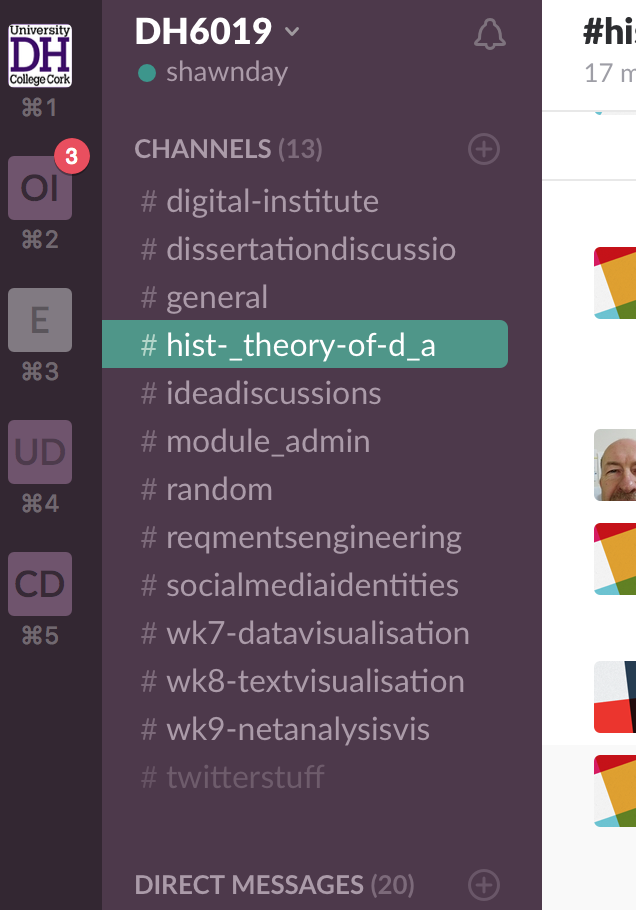
Slack allows me as a lecturer to extend my seminar conversations to an online space allowing the conversation to continue beyond the lecture hall or classroom. As the interface is intuitive, it provides an informal and easy to use chat-like experience leveraging channels with a light level of organisation that doesn’t get in the way of the discussions themselves.
In fairness, the challenge that Blackboard poses for many users is that there are layers of interface to work through to find what one is looking for and even then, many users complain that the threaded discussions are confusing and they aren’t sure what conversation they are actually participating in or responding to. Blackboard offers a unique interface and experience that doesn’t leverage familiarity with popular platforms demanding engagement on its terms and in unfamiliar ways. As Slack has a single linear discussion within a channel, it takes on more of a stream-of-consciousness approach. This has proven to be far more intuitive and familiar. Users names are embedded in their contributions along with the date. Conversations are displayed in chronological order (with no intrusive extra content or graphic enhancements). They can be filtered and searched. Additionally (and extending the SM chat like functionality) users can choose to respond to a comment with a thumbs up or a ‘like’ easily drawing them into participation. Studies have demonstrated this mode of response to be a very strong form of engagement that maintains contact and by lowering the bar for participation keeps people engaged in conversation.
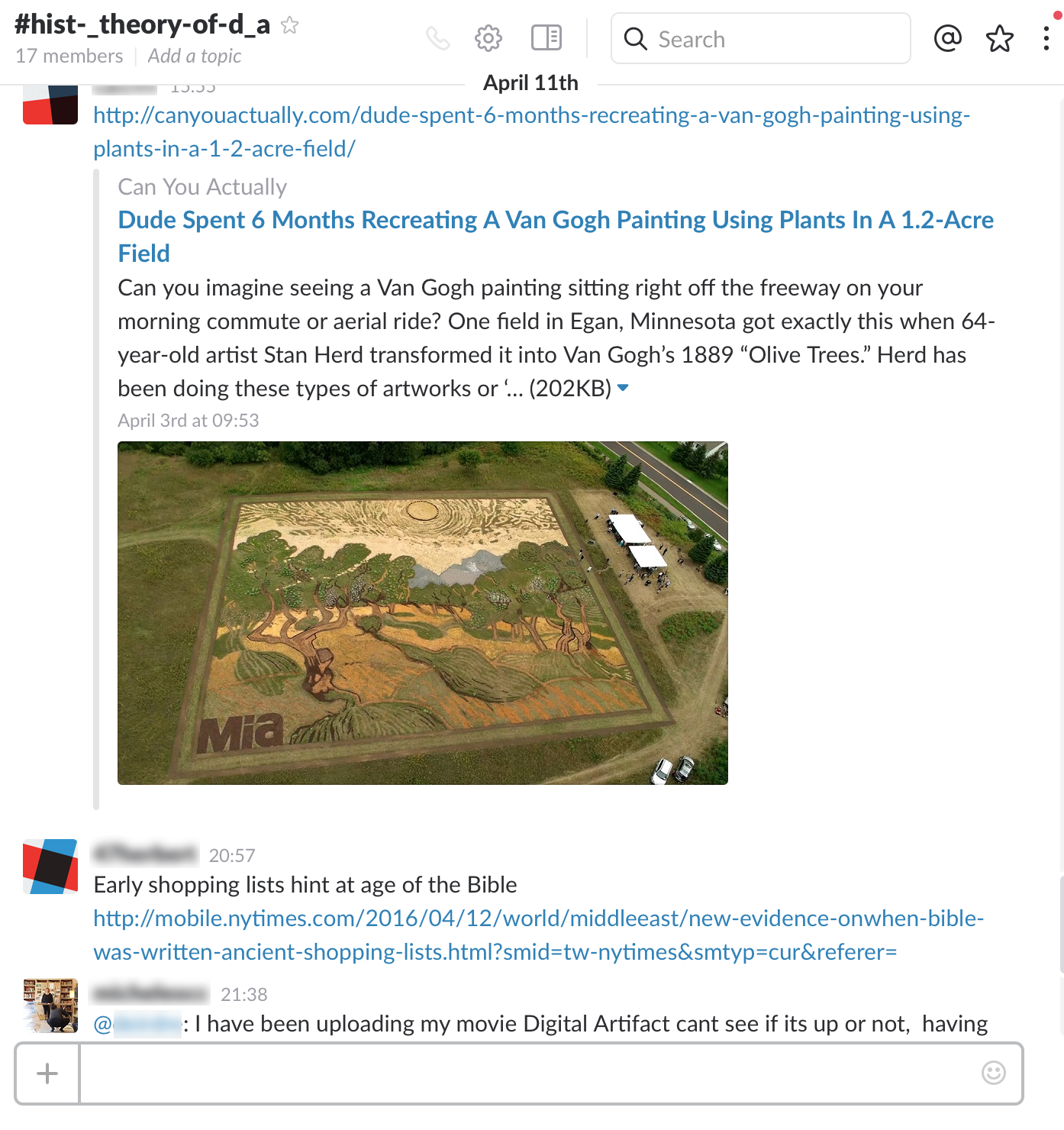
Slack provides a simple and efficient platform to share ideas. Creating a Slack post is not unlike a Twitter Tweet. It is captured and can inspire reaction. The Slack idea can be shared from a multitude of client apps (iOS, Android, Desktop) and does not require logging into and going through a series of steps to find a place to post within an application only used in the classroom such as BlackBoard. It is informal, familiar and easy. As a result it lowers the barriers and allows for an immediate capture of a fleeting thought.
Slack also allows a quick and efficient means for the lecturer to reach the module participants. Announcements can be targeted at individual users with a simple @handle prefix or a mass announcement at all attendees within a channel. Individual users control their notification preferences so they seamlessly blend into their communications stream and don’t require going to a separate application of being forced to check for messages. It can be immediate but it doesn’t force users to adapt to it, instead allowing it to be adapted to their own communication preferences.
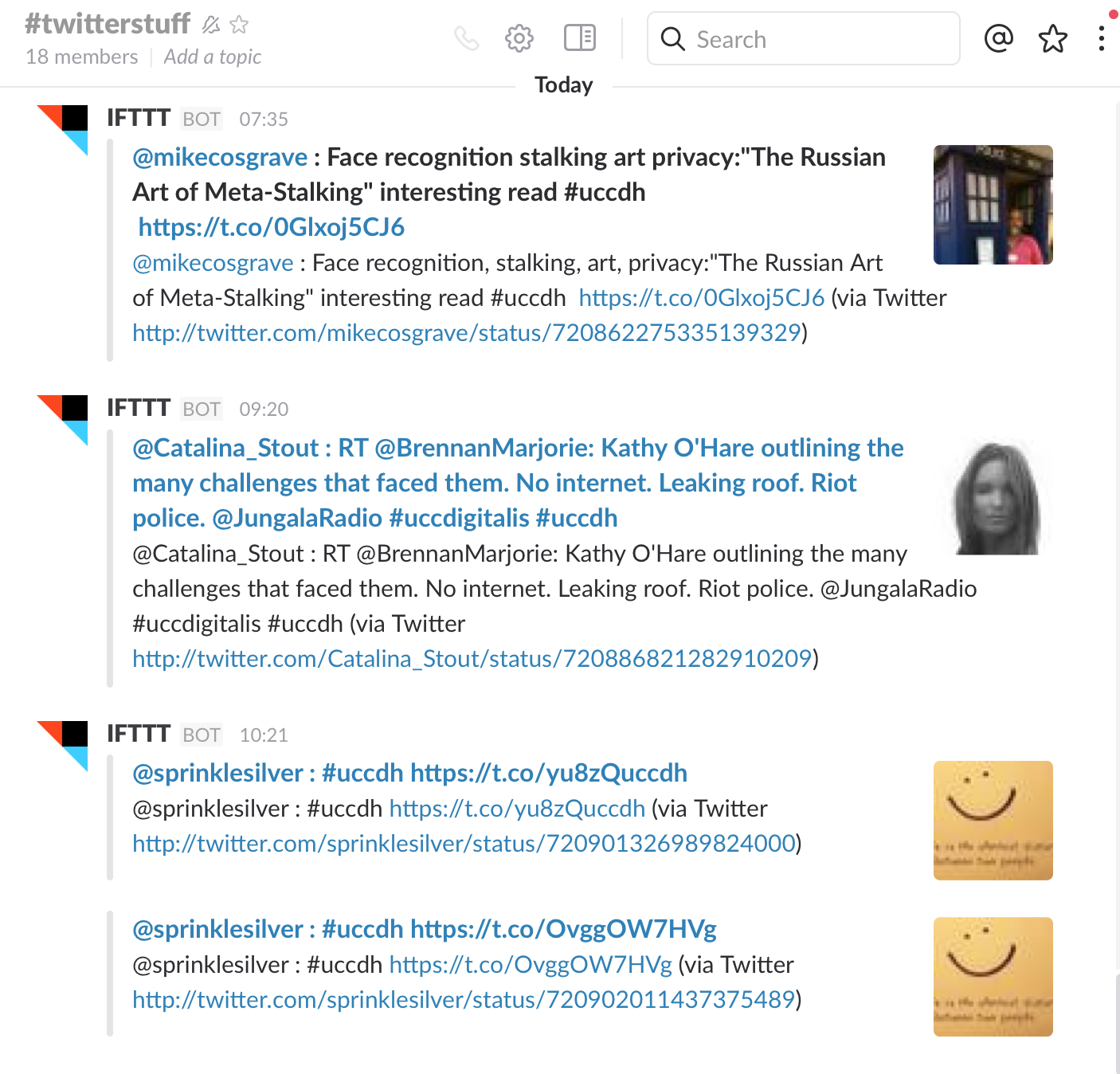
Finally, Slack offers a automated capture of wider conversation in and outside of the classroom via social media. Automated scripts can be easily created in Slack to embed specific hostages within the Slack discussion allowing for fuller engagement on student’s platform of choice rather than forcing them to engage solely on a dedicated learning Management System. Tweets can be aimed to Slack as can participation on most popular social media platforms. Additionally, with an open Application Program Interface (API) integration apps such as If Then Than This (IFTT) can potentially harvest conversation from any missing platform and tie it directly into the Slack environment.
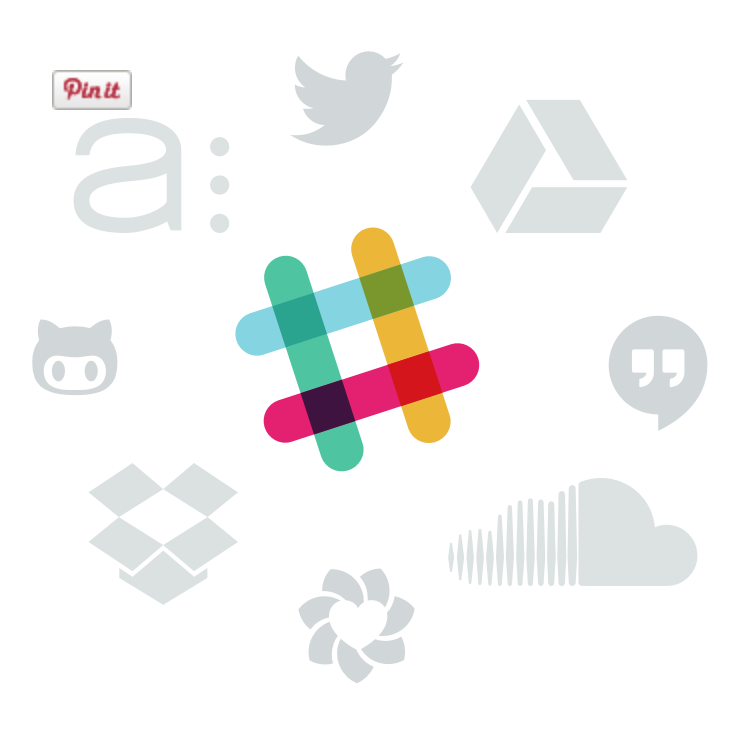
I am using Slack for my blended learning module (DH6019) to find a means for informal communication with and amongst participants that lacked any physical opportunity to engage with myself or one another. General communications are visible to all members of the group and in that way not dissimilar from a seminar group. There is a facility for private chats between individuals as well. Slack focusses on encouraging transparency in instantaneous synchronous communication or asynchronous messaging. Messaging is rich in content supporting text as well as URL to external sites and uploading of media of many types.
I can choose to embed a video of myself speaking, or from a variety of external sources such as YouTube, Vimeo, TED etc. I can embed an audio file or a still image in the same fashion. These files exist right within the conversation with the ability to view them in the larger context of the discussion – without having to go to a separate app or download for outside viewing.
My Slack implementation initially provided a main channel for administrative matters relating to module delivery, a channel for discussion of random ideas and weekly channels for each topic containing a video of the lecturer, uploads of reading materials. In this it may not differ greatly from BlackBoard. However, Slack is slick and minimalist in presentation and immediately familiar to students. Many have commented on how easy and intuitive it was to use and this gained immediate positive reaction. As a case in point, almost immediately one student created a separate channel to discuss and coordinate the preparation of group work for another module.
Slack offers a variety of means of engagement – a web client (Slack.com) as well as desktop applications for OSX, Windows and Linux. It also features iOS, Android and Windows Mobile clients so that participants can engage when and wherever suits their own needs. This adds to being able to participate whenever and wherever suits the participant or the idea strikes.
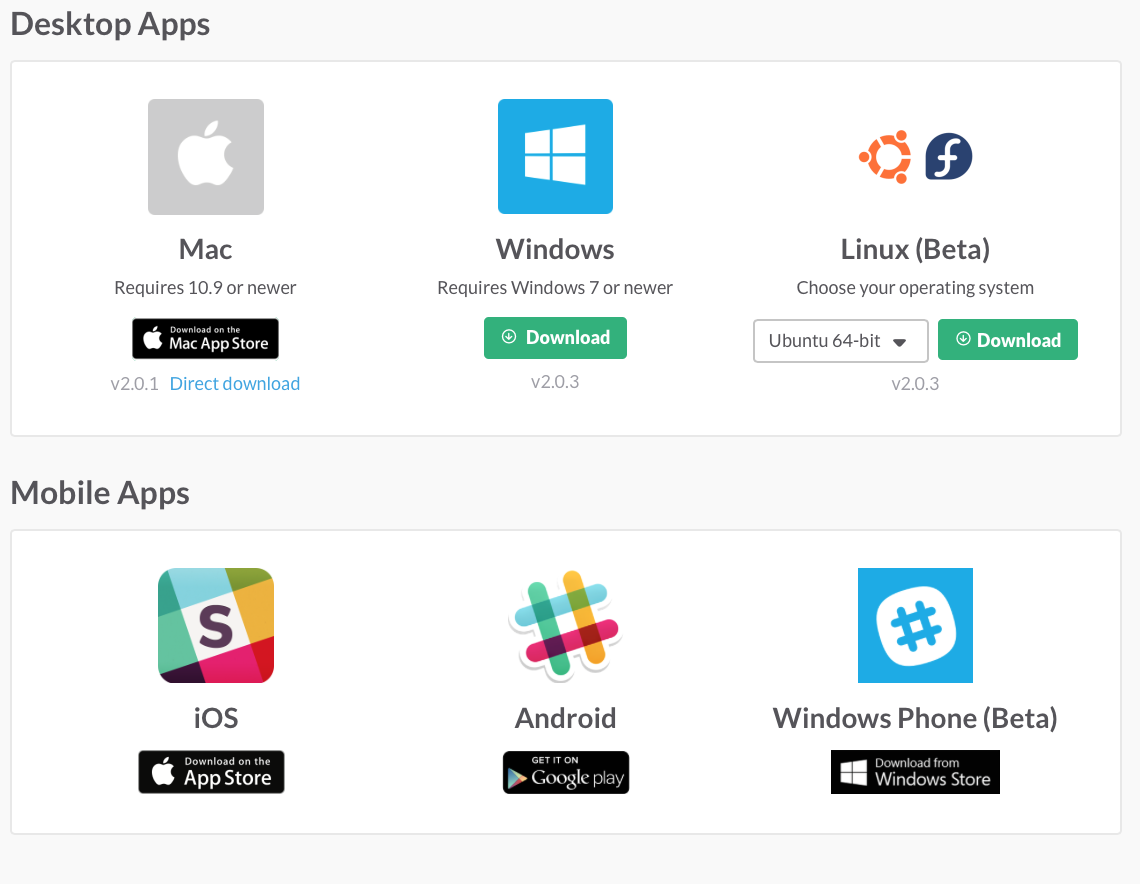
Slack is free to use with a limited number of restrictions around certain features. However, I have not encountered any of these restrictions in our classroom experience. I expect that others may be using Slack elsewhere at UCC, but am unaware of them. I am familiar with a couple other initial forays in the last year globally.
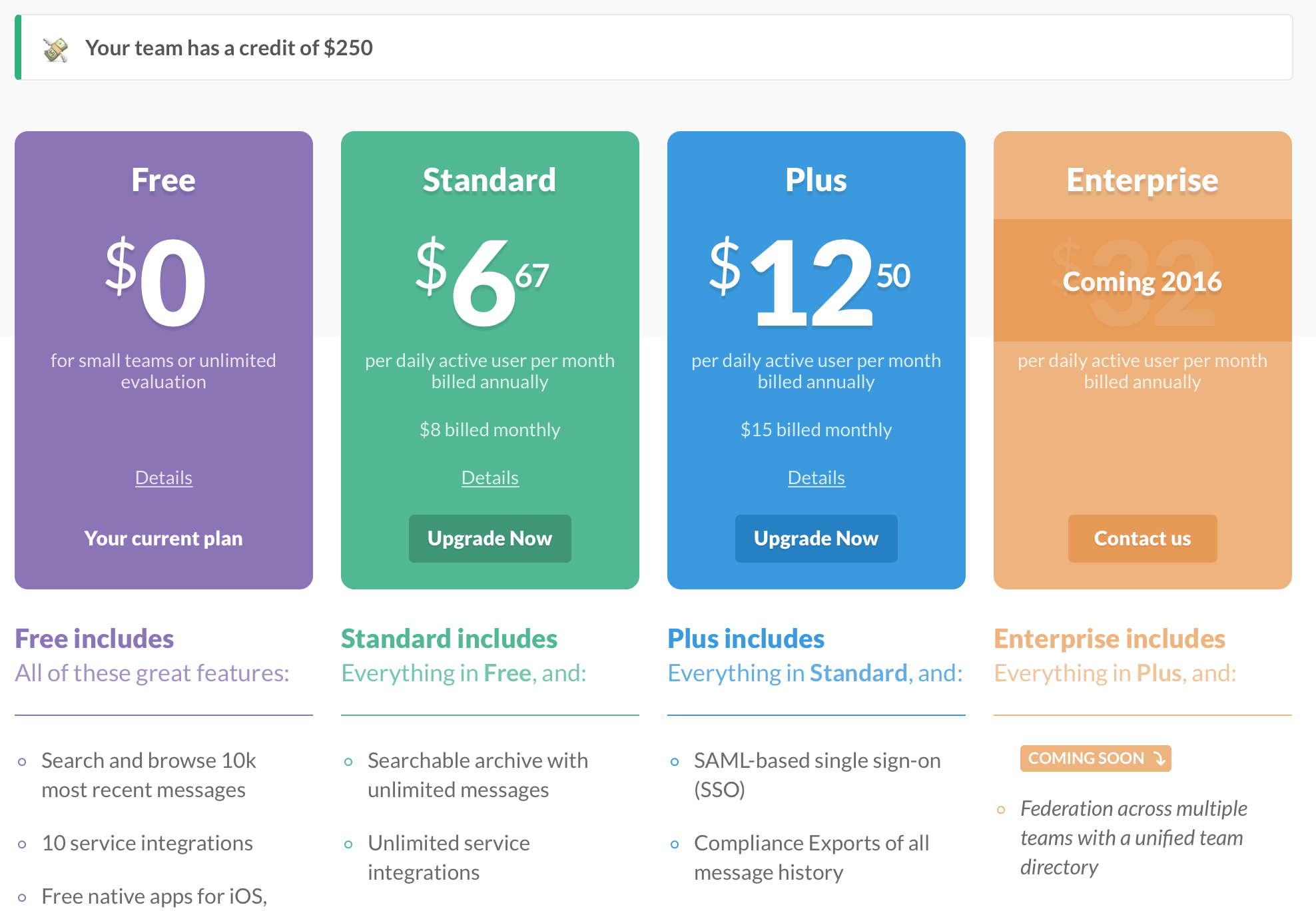
My students have taken to Slack and have shaped it to suit their own uses – it allows for text chat to be extended to an audio hangout at the click of a button when richer engagement is desired. It permits students to catch up with past interactions at their own speed and share knowledge in ways that suit their own needs and wants. It has built confidence, amplified engagement and encouraged informal participation. In short, it is an emerging tool that allows users to shape their own usage of it, but on a common platform for broader engagement and interaction.
The integrations with a variety of social media platforms and other messaging services, have turned into into a course hub. I believe this is crucial as it leads to a write-once, deploy-many approach to sharing and amplifies the results of participants’ efforts. It also allows for individual preferences of creation tools and harmonises the dissemination of this.
Prior to deployment of Slack users complained of feeling out of touch with lecturers and with one another. Although lecturers were using a variety of means (BlackBoard, YouTube, Vimeo, Twitter, FaceBook) much of the interaction was asynchronous and often unidirectional.
Slack provided a means to allow student/participants to interact directly and on their own terms and to spark, carry on and develop their own paths of discovery.
As a result and after 4 months of use in DH6019 Tools and Methods participants report a reinvigorated sense of engagement with their lecturer, the material and their learning community.

[…] More detailed blog post by Shawn Day about Slack experiences […]
[…] More Detailed Blog Post by Shawn Day: Using Slack for Learner Engagement […]